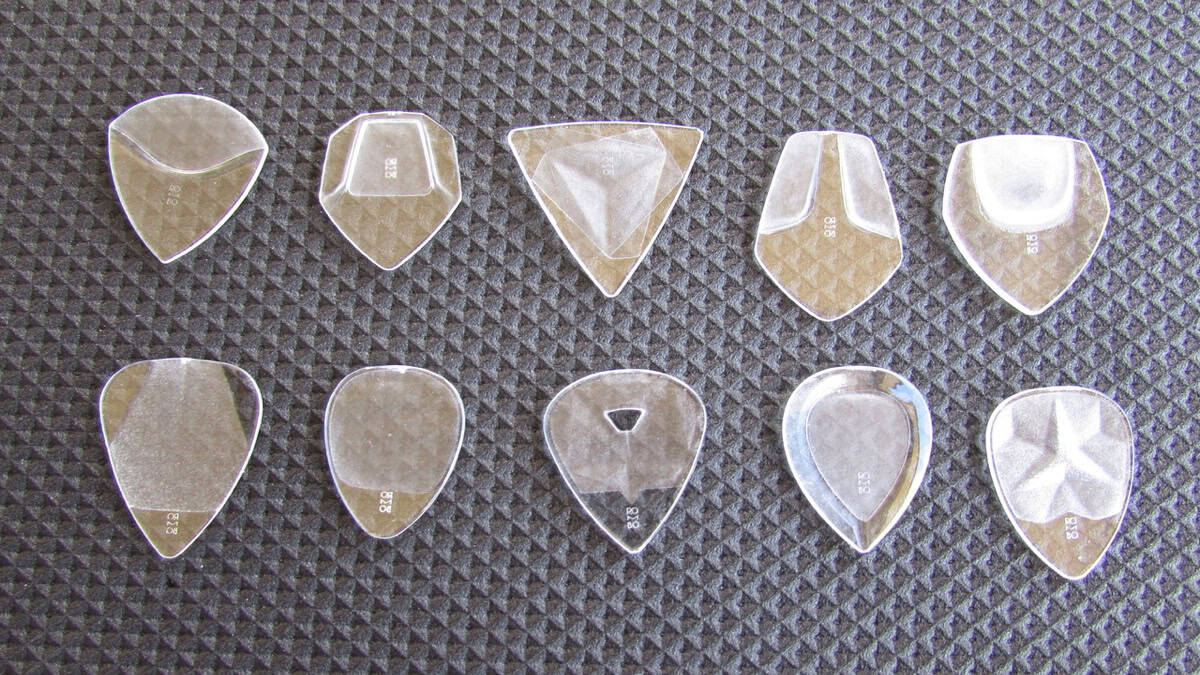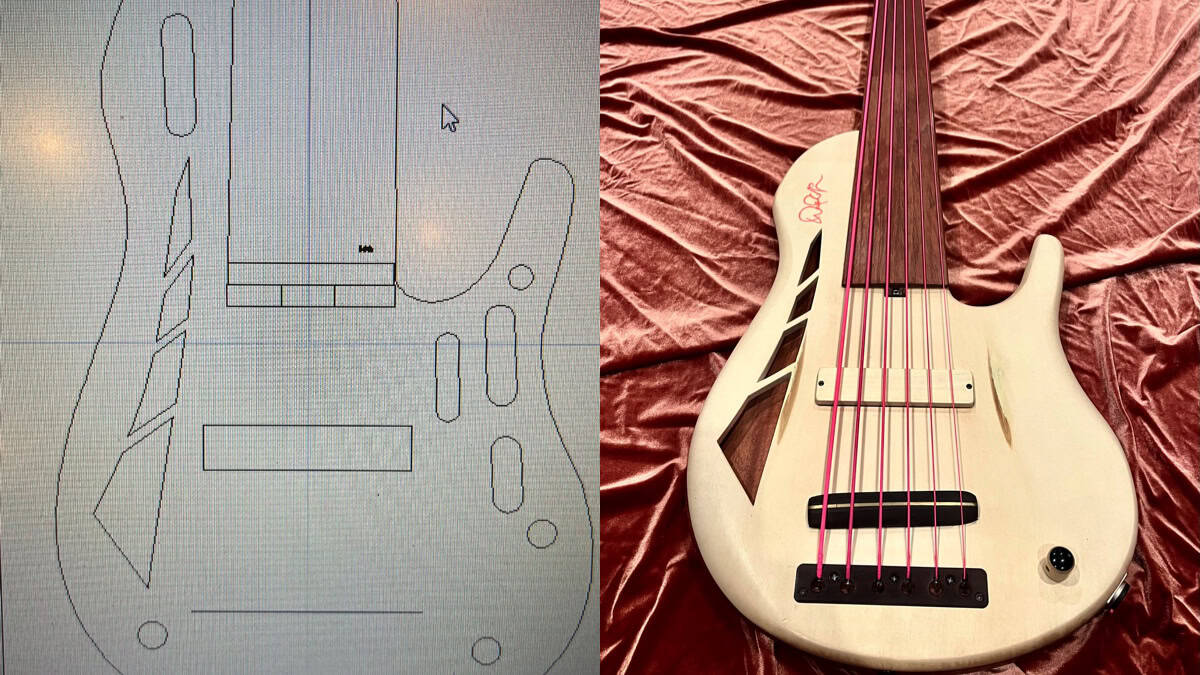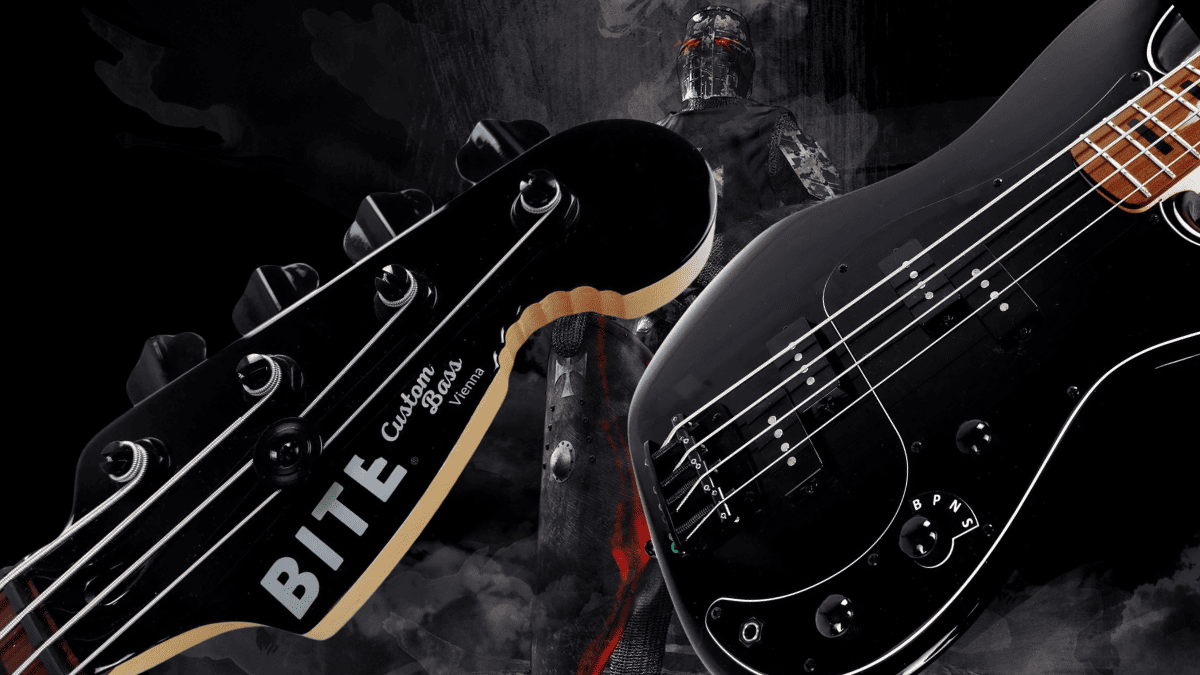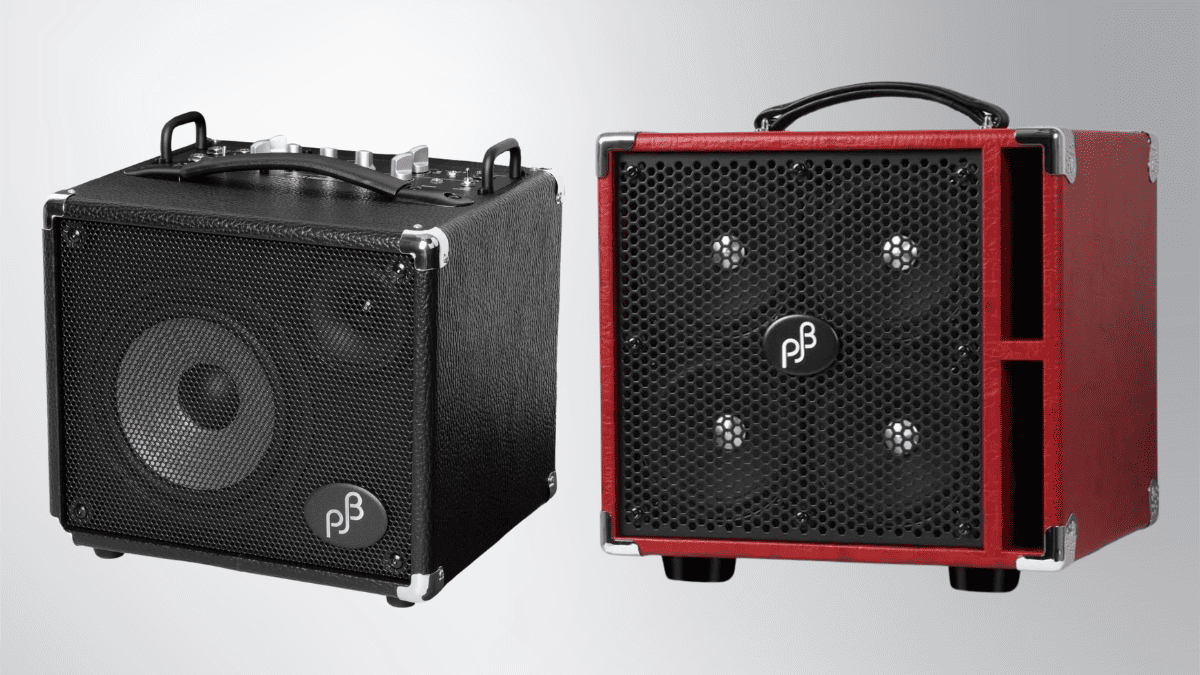Gear Reviews
Review: Mesa Boogie Subway TT-800 Bass Amplifier

Mesa Boogie Subway TT-800 Bass Amplifier review…
I have had the good fortune to review several of Mesa Boogie’s offerings in recent years, going back to their M6 Carbine head several years ago. More recently, I reviewed the WD-800 head, from the popular Subway series and Subway 2×12 cabinet. One thing is for sure, Mesa has been at it for a long time, and it shows. Every time I play one of their heads or cabinets, I think to myself, “yep, this is pretty much just what I hoped it would be.” I guess it’s reasonable to expect such results from a company that’s been at the forefront of the industry for as long as they have. With all of their products, there is just something about the form factor, build quality, and performance that feels like the cumulative outcome of decades of top-notch design and manufacturing. When I got the opportunity to check out their newest amp and flagship of the Subway Series, the TT-800, needless to say, I jumped at the chance.
The Subway TT-800 is an exciting amalgam of two of Mesa’s most iconic products, both modern-day and that of yesteryear.
It is a two-channel bass amp, and while channel 2’s preamplifier is based on the ever-popular and great sounding Subway D-800 amplifier, channel 1 borrows from the formidable and iconic Bass 400+ of the late ’80s. Long ago, the tank-like Bass 400+ was the pinnacle of cutting edge electric bass amplification, pairing a high power tube amplifier with sophisticated tone-shaping and EQ. It was seen on stage with countless bass icons and was lauded by players and techs alike for its killer tone, massive payload, and roadworthy dependability. When Mesa said they were building a Class D, two-channel amplifier that incorporates some of the design and tonal elements of the Bass 400+, I wondered how they could go wrong. The answer, of course, is that they haven’t—the TT-800 fires on all cylinders, delivering exceptional tone shaping, flexibility, and performance.
I will go over the controls and features of the amp here, but it should be noted that Mesa’s owner’s manual for the TT-800 is full of great information, including background info on the design goals of the amp and some excellent suggestions for best results. It is also well written and easy to digest, which is not something that you can say for many amplifier product manuals. The TT-800’s owner’s manual could, and should be the benchmark for bass gear owner manuals. You can find a copy online here.
On the front panel, from left to right, you’ll find a single ¼” input jack, a Mute switch, a High/Low Gain switch (for tailoring the input level to your desired gain preferences), along with Deep and Bright switches for global tone shaping. From there, the signal splits into channel 1 and channel 2, which you can select via the small switch on the far right-hand side (or the optional footswitch, which offers a Mute and Channel Select controls). Both channels provide independent Input Gain controls and Mesa’s Variable High Pass Filter (HPF), from their D-800+ head. The HPF allows you to dial out the deep, subsonic, rumbly lows that can muddy up your stage sound, and make your amp and cab work overtime to produce frequencies that are below the usable range for bass guitar. In the last ten or so years, bass players seem to have discovered what pro audio and live sound engineers have known for decades: that carving out unusably subsonic low end can drastically help make your bass sound tighter, fuller and punchier, in a mix. It’s great to see this essential tone shaping tool make it onto the front panel of an amplifier!

From there, the tone controls, while similar, depart from one another. Channel 1 (the 400+ channel) is designed as an “old school” sound, with an all-tube gain stage that feeds a traditional Mesa-style tone stack with Bass and Treble controls, and a Mid-control with “Mid-Shift” voicing knob, allowing for more broad midrange shaping. Channel 2 (The Subway channel) is inspired by the highly popular Subway series of amps (D-800, D-800+, and WD-800) and includes the High Pass Filtering control as well as traditional Bass and Treble and a semi-parametric midrange section that lets you boost/cut a user-selectable midrange frequency, for more precise midrange sculpting.
Both channels boast independent effects loops that can be used as “power amp inputs,” bypassing the amplifier’s preamps and tone controls for each channel on the TT-800, allowing the amplifier to function as a stripped-down power amp. Both channels feed the amp’s Master Section, which includes a two-way switch, to toggle between the “Boogie” channel and the “Subway” channel, and Mesa’s brand new Output Overdrive Symmetry control. This unique and super cool feature allows for fine tailoring of how the amp clips as it reaches the ceiling of its output capacity and is more noticeable at louder volume levels. Essentially, as you turn the knob clockwise from zero, you are decreasing the symmetry of the output overdrive, making it less tight and clean, with more tube-like reactivity. The TT-800 also incorporates Mesa’s Power Amp Damping technology that the WD-800 made popular, affecting how the amplifier behaves in its output section, resulting in a perception of “tighter vs. looser” tone. Amplifiers with higher damping factor are thought to have a more controlled and linear sound, akin to how we tend to think of solid-state amps. Lower damping factor makes the amplifier feel a little looser with more “bloom” to their sound, kind of how we’re used to thinking about most tube amps. On the WD-800, users have a 3 position knob to set the damping factor, but on the TT, the damping factor is set automatically by the position of the impedance selector on the back of the amp, which should be set according to the total impedance load (2, 4, or 8 ohms) of the cabs connected to the amplifier.
Moving on to the rear of the Subway TT-800, one is impressed by the sheer connectivity and signal routing flexibility.

Not one but two tube-driven XLR DI outputs are present, one that taps the signal after the bright and deep switches and the tube-driven gain stage, but before channel EQ. The other DI uses the finished signal with all of the bells and whistles, including the FX loops. The amp automatically switches the DI feed from Boogie to Subway, depending on which channel is in use. Both DI outputs feature switches for ground lift and mic/line level. Each channel has its own discrete ¼” effects loop, and the TT has ¼” jacks for headphone output, footswitch (optional), Aux-in, and Tuner output. Topping off the broad feature set is a super handy USB output for powering a device, which is handy if your tablet or phone is as old and always on its last couple percent as mine seem to be. The aforementioned 3-way impedance selector allows you to run the amp optimally at 2, 4, or 8 ohms.
All in all, the TT-800 is a LOT of amp in a small, well-designed package.
Not only is the build quality exemplary, with very high-end fit and finish, but it seems that Mesa was able to pack a ton of features and flexibility into the TT without it feeling cramped or claustrophobic. The two channels offer a lot of value; it’s kind of like having two amps in one. For someone like me, who more often than not brings more than 1 bass to the gig, I could see using the two channels to dial in two different basses. Then between songs, you grab the other bass, flip the channel switch (or stomp on the footswitch), and you’re good to go. I would be delighted to run my P bass through the warm, tubey Boogie channel, and running my 70’s Jazz through the Subway channel’s more direct and articulate voicing. For others, having the ability to switch on the fly between a clean channel and a dirty channel with great EQ may be highly enticing.
Overall I was more than impressed with the sound and performance of the TT-800. The amp’s voicings on either channel with everything set at noon is excellent, with a warm, articulate punch that sounded stellar, even at high volume. Once you start fiddling with the EQ, it opens up a world of versatility, and it’s hard to imagine someone not being able to find a sound they love from this amp. The Subway TT-800 comes with a fitted Mesa padded amp bag and retails for $1,099.00
Mesa Boogie Subway Ultra-Lite 2×15 Vertical Bass Cabinet
Mesa was kind enough to send their big dog, the Subway Ultra-Lite 2×15 Vertical Bass Cabinet, along with the TT-800 for review.

As always, I’m a big fan of Mesa’s fit and finish. Their gear exudes a high-quality feel and has a roadworthiness that a lot of other equipment doesn’t quite inspire. What really blew me away about the 2×15 Vertical was how light it is. I mean, I know “Ultra-Lite” is in the name, but remarkably, this is a 2×15 cab that I can lift with one hand. It does come with tilt-back casters for easy transport, but boy does it feel like a godsend when you’re hoisting it into the back of your SUV after a 4-hour gig. Sound-wise, the 2×15 sounds big, bold, and full, but not flabby or floppy whatsoever, as some 15″ loaded cabs can tend to sound. It stays firm and controlled even at high volume, and the tweeter offers plenty of snap and high end for when needed. On the back, dual combo jacks (Speakon that also accept ¼”) are a welcome sight, and an attenuator allows you to dial in or out the amount of tweeter in your sound. There’s not much to criticize about this cabinet; it’s lightweight and easy maneuverability make it a strong contender. I thought the 2×15 paired beautifully with the TT-800 and made for one impressive, versatile, and killer sounding rig. The Ultra-Lite 2×15 Vertical comes with a fitted slipcover and retails for $1,599.00.
For more information on the Subway TT-800 and Subway Ultra-Lite Bass Cab, visit online at mesaboogie.com
Mesa/Boogie Subway WD-800 Head and Subway 2X12 Vertical Cabinet Review
David C Gross has been the bassist for a lot of folks. He has written 14 bass books and 3 instructional videos, hosts “The Notes From An Artist Radio Show” on www.cygnusradio.com Monday nights 8 PM EDT, and the “Notes From An Artist” podcast available on iTunes, Spotify and all podcast platforms.
NFAA brings you behind the scenes with individuals who forged a timeless musical canon – spanning rock, jazz, funk, blues, folk, country, and permutations thereof. Listen to stories and anecdotes hitherto untold and relive more than a few chronicles that have become lore with a fresh vision. It’s the soundtrack of our lives. Celebrate the past, live in the present, and anticipate the future – take Notes From An Artist
You can contact David @ www.thebassguitarchannel.com/contact for more information regarding his online lessons and world-renown correspondence course.
Bass Videos
Review: CrystalBright Rombo Picks

CrystalBright Rombo Picks
PR SamplePlaying bass with a pick is still a touchy subject in our community. I believe you should be able to use whatever you need to get your sound. Even though I mostly play with my fingers, I like to check out innovative new picks that might have something new to offer, sonically speaking.
Judith and Carlos from Rombo recently contacted me about a new material called CrystalBright that they have been researching for the last 12 months and offered to send some prototype picks. After trying them out, I put together this video with my findings.
For more info check out @rombopicks
Gear
New Joe Dart Bass From Sterling By Music Man

Sterling by Music Man introduces the Joe Dart Artist Series Bass (“Joe Dart”), named after and designed in collaboration with the celebrated Vulfpeck bassist.
Above photo credit: JORDAN THIBEAUX
This highly-anticipated model marks the debut of the Dart bass in the Sterling by Music Man lineup, paying homage to the Ernie Ball Music Man original that all funk players know and love. The bass embodies many of the original model’s distinctive features, from its iconic minimalist design to the passive electronics.

The design process prioritized reliability, playability, and accessibility at the forefront. Constructed from the timeless Sterling body, the Dart features a slightly smaller neck profile, offering a clean tone within a comfortable package. The body is crafted from soft maple wood for clarity and warmth while the natural finish emphasizes the simple yet unique look.
Engineered for straightforward performance, this passive bass features a ceramic humbucking bridge pickup and a single ‘toaster’ knob for volume control. Reliable with a classic tone, it’s perfect for playing in the pocket. The Dart is strung with the all-new Ernie Ball Stainless Steel Flatwound Electric Bass Strings for the smoothest feel and a mellow sound.

The Sterling by Music Man Joe Dart Bass is a special “Timed Edition” release, exclusively available for order on the Sterling by Music Man website for just one month. Each bass is made to order, with the window closing on May 31st and shipping starting in November. A dedicated countdown timer will indicate the remaining time for purchase on the product page. Additionally, the back of the headstock will be marked with a “2024 Crop” stamp to commemorate the harvest year for this special, one-of-a-kind release.
The Joe Dart Bass is priced at $399.99 (MAP) and can be ordered globally at https://sterlingbymusicman.com/products/joe-dart.
To learn more about Joe Dart, visit the official Vulfpeck artist site here https://www.vulfpeck.com/.
Gear Reviews
The Frank Brocklehurst 6-String Fretless Bass Build

A few months ago, my Ken Bebensee 6-string fretted bass needed some TLC. You know, the one rocking those Pink Neon strings! I scoured my Connecticut neighborhood for a top-notch luthier and got pointed to Frank Brocklehurst, F Brock Music. He swung by my place, scooped up the bass, and boom, returned it the next day, good as new. Not only that, he showed up with a custom 5-string fretted bass that blew me away. I couldn’t resist asking if he could whip up a 6-string fretless for me.
Alright, let’s break down the process here. We’ve got our raw materials: Mahogany, Maple, and Holly. Fun fact – the Mahogany and Maple have been chilling in the wood vault for a solid 13 years. Frank is serious about his wood; they buy it, stash it away, and keep an eye on it to make sure it’s stable.

First up, they’re tackling the Mahogany. Frank glues it together, then lets it sit for a few days to let everything settle and the glue to fully dry. After that, it’s onto the thickness planer and sander to get it nice and flat for the CNC machine. The CNC machine’s the real star here – it’s gonna carve out the body chambers and volume control cavity like a pro.

While the Mahogany’s doing its thing, Frank goes onto the neck core. Three pieces of quartersawn maple are coming together for this bad boy. Quartersawn means the grain’s going vertical. He is also sneaking in some graphite rods under the fingerboard for stability and to avoid any dead spots. The truss rod is going to be two-way adjustable, and the CNC machine’s doing its magic to make sure everything’s just right.

Now, onto the design phase. Frank uses CAD software to plan out the body shape, neck pocket, chambering, and those cool f-holes. I had this idea for trapezoid F-holes, just to do something different. The CAD software also helps us map out the neck shape, graphite channels, and truss-rod channel with pinpoint accuracy.

Once everything’s planned out, it’s CNC time again. Frank cuts out the body outline, neck pocket, and the trapezoid F-holes. Then it’s a mix of hand sanding and power tools to get that neck just how we like it. Oh, and those f holes? We’re going for trapezoids of different sizes – gotta keep things interesting.

Next step: gluing that neck into the pocket with some old-school hide glue. It’s got great tonal transfer and can be taken apart later if needed. Then it’s onto hand-carving that neck-body transition.

For the custom-made bridge, Frank uses brass for definition and Ebony for tonal transfer and that warm, woody sound.

BTW, for tunes, Frank went with Hipshot Ultralights with a D Tuner on the low B. This way I can drop to a low A which is a wonderful tone particularly if you are doing any demolition around your house!
Now it’s time for the side dots. Typically, on most basses, these dots sit right in the middle of the frets. But with this bass, they’re placed around the 1st, 3rd, 5th, 7th, 9th, and 12th frets.

Frank’s got his pickup hookup. Since the pickup he was building wasn’t ready, he popped in a Nordstrand blade to give it a whirl.

It sounded good, but I was itching for that single-coil vibe! And speaking of pickups, Frank showed me the Holly cover he was cutting to match, along with all the pink wire – talk about attention to detail!

A couple of things, while it is important for me to go passive, it is equally important for me to just go with a volume knob. Tone knobs are really just low-pass filters and the less in the way of a pure sound for me, the better.
Finally, it’s string time! As usual, I went for the DR Pink Neon strings. Hey, I even have matching pink Cons…Both low tops and high!

Once we’ve got everything tuned up and settled, we’ll give it a day or two and then tweak that truss rod as needed. And voila, we’ve got ourselves a custom-made bass ready to rock and roll.

I want to thank Frank Brocklehurst for creating this 6 string beast for me.
Gear Reviews
Review Transcript: BITE Custom Bass – The Black Knight PP Bass

This is a written transcript of our video review of the BITE Custom Bass Black Knight PP Bass originally published on March 4, 2024
BITE Custom Bass – The Black Knight PP Bass Review…
Bass Musician Magazine did a review on a Steampunk bass from BITE Guitars about three years ago, it was an amazing instrument, and we were very impressed. Now we’re happy to bring you another BITE bass, the Black Knight PP.

Everybody needs a P-type bass, it’s the standard of bass. If you’re recording, they want you to have a P bass. So why not have something that gives you a little more by having two instead of one P pickup. That’s the idea of this bass, it’s the first thing that leaps out: the double P pickup configuration.

Installing two of their 1000 millivolt split-coil pickups, BITE then went one step further and wired them up in a 4-way parallel/series circuit, a look at the controls reveal a 4-way rotary selector:
The first position, marked “B”, gives you the bridge pickup by itself.
The second position, marked “P”, gives you the bridge and neck pickups in parallel mode, that’s the traditional J-type circuit, it reduces output due to the physical law of parallel circuits.
Position number 3 is marked “N”, it gives you the neck pickup by itself.
And finally, number 4, marked “S”, gives your bridge and neck in a series (humbucking) mode which adds up resistances and thus boosts output. The other two controls are master volume and master tone.

What’s more, like every BITE bass, this one also has a reinforced headstock heel designed to give it extra output and sustain. The BITE website features a graph and explanation of what they have done to the heel, as compared to traditional headstocks.

A look at the body reveals a beautiful Black Blast body finish and underneath that we have alder wood. The bass has a matching headstock with a 4-in-line tuner setup and the traditional bite out of it, so everybody will know what kind of bass you’re playing. The pickguard is 3-ply black, the neck is vintage tinted hard maple and it has a satin speed finish at the back which keeps your thumb from sticking.
On top of that, there’s a clear-coated roasted black locust fretboard with black blocks marking the frets. The nut is a black Graph Tec nut, we’ve got diamond dome control knobs, and the tuners are lightweight compacts with cloverleaf buttons and a 1:17 ratio precision gear. The bridge is a Gotoh brass bridge with 19-millimeter string spacing.
Overall measurements: we’ve got a standard 34″ scale, a 1.65″ width nut and a C neck profile. This bass weighs 8.2 pounds, or 3,7 kilograms for our metric friends, and it uses standard 18% nickel silver frets.
Taking a closer look at the sound, this bass is a joy to play. The BITE proprietary 1000 millivolt pickups deliver an extraordinary amount of output which is surprising considering this is a passive instrument. You may even want to set your amp to active mode because of all of the juice you’re getting out of this guy.
The tonal possibilities are very versatile, it’s a straight P if you want but also much more with those different arrangements of the circuitry. So why have multiple basses when you’ve got one that can give you your basic P plus a lot more?
To sum it up, the Black Knight PP is an amazing instrument. The attention to detail that BITE puts into their basses is second to none. This bass is also amazingly balanced and gorgeous to hold and feel with the satin neck finish.
For more information, visit online at bite.guitars/product/black-knight-pp
Bass Videos
Reviews: Phil Jones Bass Compact Plus 450 and Bass Engine 17

Phil Jones Bass Compact Plus 450 and Bass Engine 17 Reviews…
In this issue, we take an in-depth look at two new amps from Phil Jones Bass, the Compact Plus 450 and Bass Engine 17.
For more information, visit online at pjbworld.com










